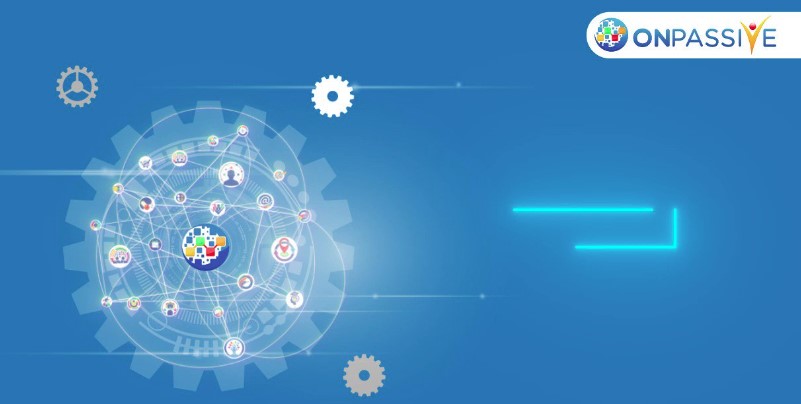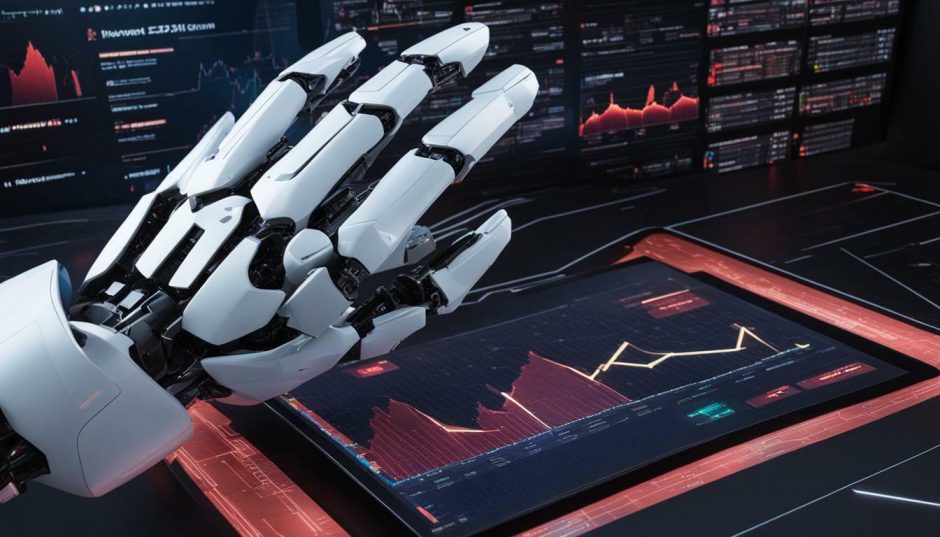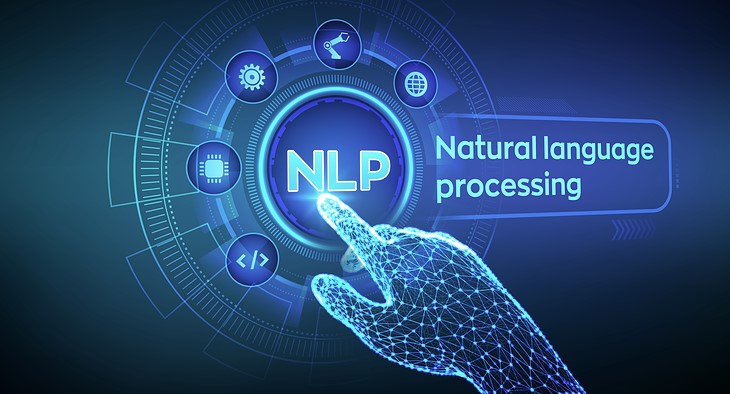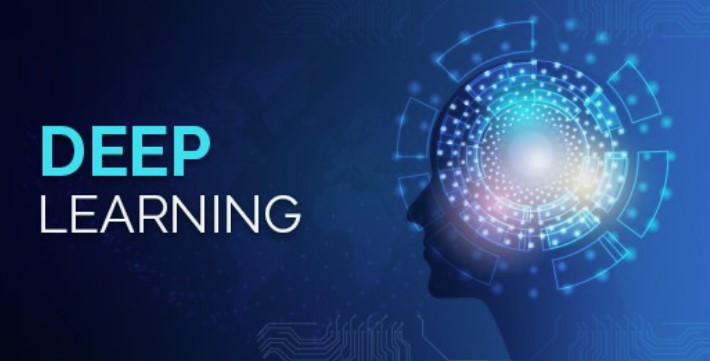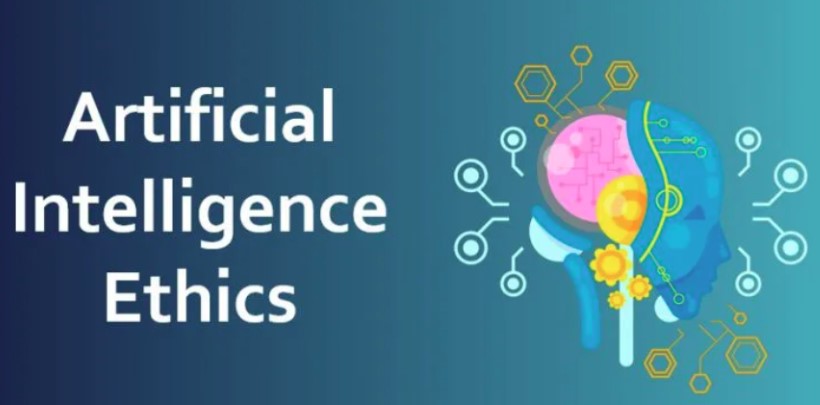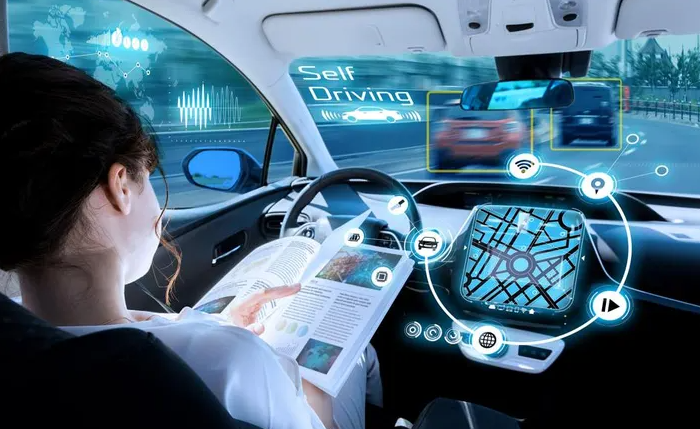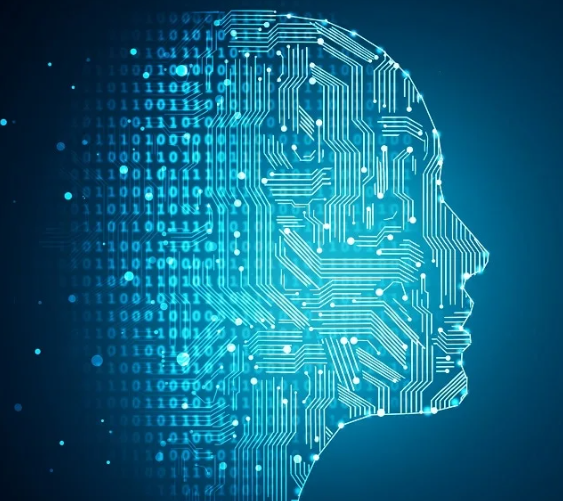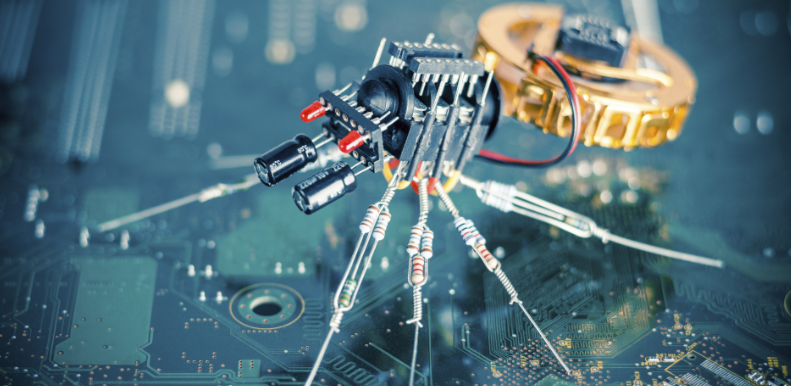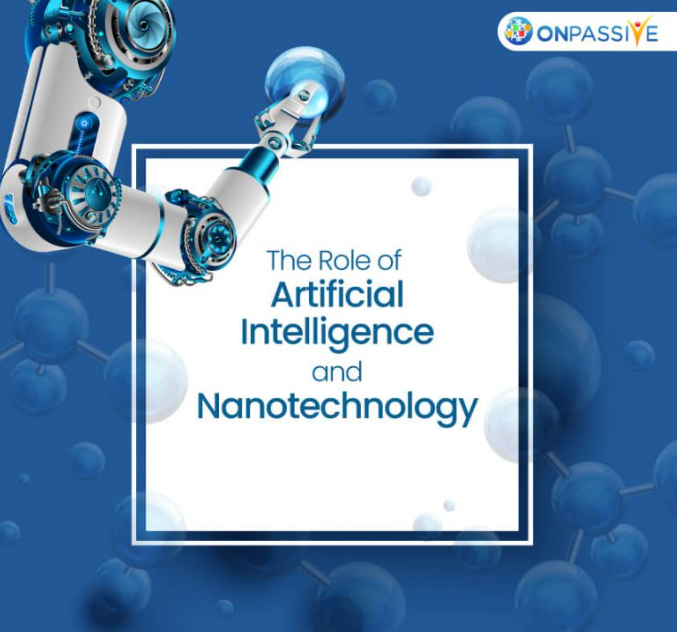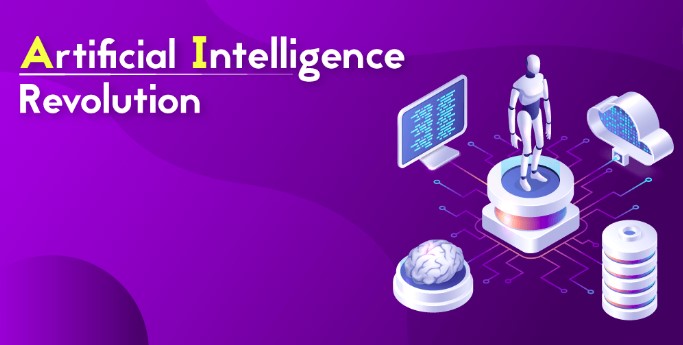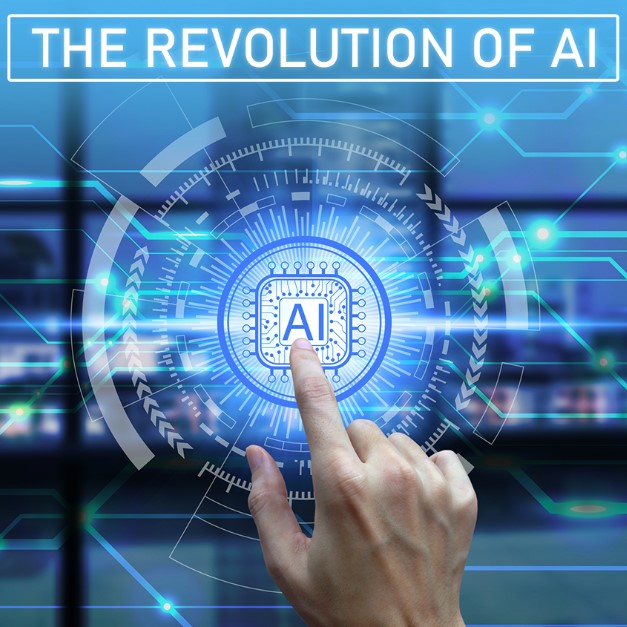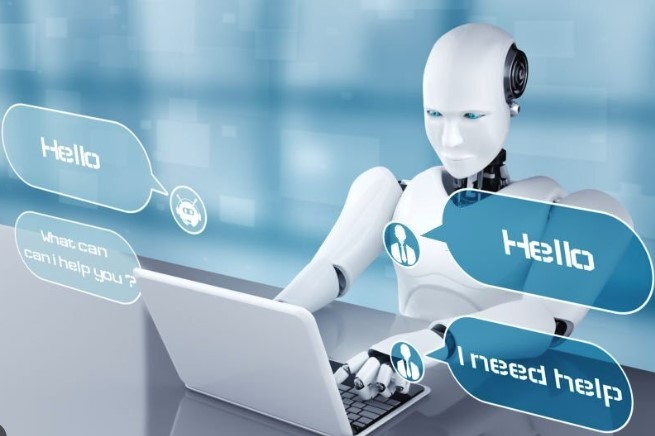Inviting you to the realm of ONPASSIVE A prominent IT company that excels in designing and implementing advanced artificial intelligence technology. The proficiency they hold in IT solutions and services, particularly in AI creation, is… More
Revolutionary Artificial Intelligent Software From ONPASSIVE
Revolutionary Artificial Intelligence
AI Software From ONPASSIVE.
My name is Warren and I am a brand affiliate of ONPASSIVE. Let me introduce you to Revolutionary Artificial Intelligence AI tools that have the potential to transform your company’s operations and drive exponential growth -You Can Access Digital Solutions On The SaaS Subscription Model From The ONPASSIVE Ecosystem, A Multi-Platform Hub For Business Acceleration.
Artificial Intelligence has emerged as a game-changer, enabling businesses across industries to streamline processes, optimize decision-making, and unlock unprecedented value. The power of AI lies in its ability to analyse vast amounts of data, learn from patterns and trends, and make intelligent predictions and recommendations. By leveraging AI, your company can gain a competitive edge, enhance operational efficiency, and make informed strategic decisions that fuel growth.
Here are some key ways in which AI can revolutionize your business:
1. Enhanced Customer Experience: AI-powered chatbots and virtual assistants can provide round-the-clock customer support, addressing queries and resolving issues instantly. Natural Language Processing (NLP) algorithms enable these systems to understand customer intent and provide personalized responses, leading to higher customer satisfaction and loyalty.
2. Intelligence Data Analytics: AI algorithms can analyse large datasets to uncover valuable insights, trends, and patterns that humans may overlook. By harnessing this analytical power, you can make data-driven decisions, optimize processes, and identify new market opportunities, leading to increased efficiency and profitability.
3. Predictive Maintenance: AI algorithms can analyse sensor data from machinery and equipment to detect anomalies and predict potential failures. By implementing predictive maintenance strategies, you can minimize downtime, reduce maintenance costs, and ensure optimal performance and longevity of your assets.
4. Smart Marketing and Sales: AI can revolutionize your marketing and sales efforts by enabling personalized targeting, predictive lead scoring, and intelligent customer segmentation. By delivering tailored messages and offers to your target audience at the right time, AI can significantly boost your conversion rates and revenue.
5. Process Automation: Repetitive and time-consuming tasks can be automated using AI, freeing up your employees’ time to focus on higher-value activities. From data entry and document processing to inventory management and logistics optimization, AI-powered automation can streamline operations and improve overall productivity.
6. Risk Management and Fraud Detection: AI algorithms can analyse historical data and real-time information to identify potential risks and fraudulent activities. By leveraging AI in risk management and fraud detection, you can protect your company’s reputation, financial resources, and customer trust.
Incorporating AI into your business operations may seem daunting, but partnering with a knowledgeable AI solutions provider can help you navigate the process seamlessly.
The possibilities that AI offers are vast, and early adopters have already begun reaping the rewards. By embracing this revolutionary technology, you can position your company at the forefront of innovation, outpace competitors, and drive sustainable growth.
We would welcome the opportunity to discuss how AI can specifically benefit your company. Together, we can unlock the full potential of AI and revolutionize your business.
Join the ONPASSIVE Ecosystem Click Here
Luxury Super Cars Majlis Join Forces With Onpassive
Luxury Super cars Majlis joins forces with ONPASSIVE. Experience the combination of AI intelligence and pulse-raising speed. #ONPASSIVE presents an AI-powered thrill with its most recent marketing event. ONPASSIVE is cutting paths and establishing new milestones in the marketing and technology industry.
Learn More About Augmented Reality (AR) and Artificial Intelligence (AI)
Augmented Reality (AR) and Artificial Intelligence (AI)
Augmented Reality (AR) and Artificial Intelligence (AI) are groundbreaking technological advancements transforming various sectors worldwide. AR encounters issues related to processing power and physical boundaries, whereas AI has made significant progress utilising processors specifically designed for deep learning. Nevertheless, both technologies have a considerable journey ahead before they reach their maximum potential.
AR and AI can collaborate to amplify human cognition, utilising AI for undertakings such as computer vision, machine learning, speech detection, and object identification within AR experiences. The merger of AI and AR have uses in numerous industries, such as education, healthcare, commercial retail, and defense.
AI advantages encompass increased effectiveness, better judgement, and higher precision, but it also brings about issues like job losses, prejudice, and a lack of transparency. Similarly, AR boasts benefits like amplified learning, amplified efficiency, and intensified entertainment. However, its disadvantages consist of high expenditures, restricted acceptance, and potential distraction.
While the application of AI and AR raises questions regarding privacy and data protection, there is also a need to ensure these technologies are accessible and inclusive. Despite these hurdles and apprehensions, the amalgamation of AI and AR can potentially bring about a transformative impact in multiple sectors and enhance the quality of our lives.
Key Takeaways:
- AR and AI two technologies .
- AI AR experiences , , recognition, and object .
- The of AI and AR in education, healthcare, retail, and defense.
- AI efficiency, decision-making, and accuracy, while AR learning, efficiency, and entertainment.
- AR include job , , of , privacy, data , and and inclusivity.
The merging of augmented reality and artificial intelligence is expected to drive significant alterations across different sectors. The advantages this integration could offer, including heightened efficiency, superior decision-making strategies, and enriched learning experiences, are substantial. Nonetheless, it is vital to address the issues and barriers linked to this amalgamation, such as securing privacy, data protection, and availability for everyone.
How AI Enhances AR Experiences
Integrating artificial intelligence with augmented reality is leading to the creation of innovative solutions and pioneering technologies that enrich AR experiences. AI algorithms play a pivotal role in enhancing AR’s potential, leading to digital content that’s more engaging and interactive.
A significant area where AI boosts AR is in computer vision. Through AI, AR can precisely identify and keep track of real-world objects, allowing virtual entities to blend seamlessly with the user’s surroundings. This develops exciting prospects in fields like gaming, where virtual characters can engage with actual objects in real-time.
AI’s crucial role in machine learning enables AR apps to evolve and enhance based on user interactions and data. This also means that AR experiences can become more customized, enhancing engagement and relevance for each user.
Moreover, AI-controlled speech recognition in AR enables users to communicate with virtual content using ordinary language. This feature opens up fresh opportunities for AR apps in sectors such as education, enabling students to have interactive dialogues with virtual tutors or navigate virtual simulations using voice commands.
| AI-powered AR Benefits | AI-powered AR Disadvantages |
|---|---|
|
|
Embedding AI systems into augmented reality can tap into the complete capabilities of AR technology, crafting more engaging and interactive experiences for users. The fusion of AI and AR heralds fresh avenues within gaming, education, healthcare, among other areas, transforming our interaction with digital content.
The Future of AI-powered AR
The melding of artificial intelligence and augmented reality is an ever-developing research and development subject. As AI systems advance and become more nuanced, we can anticipate further progress in AR technology, leading to more fluid and vivid virtual encounters, with uses spanning from amusement to instructional simulations.
Nevertheless, it’s vital to tackle the issues and worries tied to AI-infused AR. It’s crucial to ensure the security of privacy and data, as AR applications accumulate and analyze massive volumes of personal information. Furthermore, considerations of accessibility and inclusivity are essential to making sure AI-infused AR services are available to all individuals, irrespective of their capabilities.
To summarize, the fusion of AI and AR offers enormous potential for enhancing human intelligence and revolutionizing diverse sectors. By harnessing top-tier technologies and AI systems, AR experiences can reach never-before-seen levels of depth and interaction. As this technology advances, it’s crucial to address ethical, privacy, and accessibility aspects to develop a future where AI-infused AR is beneficial for all.
Effects and Worries Related to the Merging of AI and AR
The blending of AI with AR possesses the capacity to drastically remodel different sectors and better our lives. However, it elicits critical issues related to privacy, data security, and the necessity to ensure access and inclusivity. Using AI within AR can significantly amplify user experiences, but acquiring and examining personal data for AI mechanisms brings up worries about data privacy and safety. Establishing stringent measures to defend sensitive data and ascertain that AI-fuelled AR technologies are utilized ethically and accountably is vital.
As stated by Tim Cook, Apple’s CEO, “Our concern for privacy is profound. We view privacy as a basic human liberty. We believe that there should be no necessity to compromise between excellent AI and privacy.”
The question of accessibility and inclusion is crucial when discussing AI and AR integration. AR solutions need to be developed in such a way that those with disabilities can easily utilize them and gain from the opportunities the technology provides. Furthermore, there’s a risk that built-in biases in AI algorithms could lead to discriminatory practices and impede inclusion. It is imperative to tackle these biases to ensure that AI and AR technologies are accessible and inclusive for all.
The transparency of AI systems is another matter of concern. The intricate algorithms that power AI can make it difficult to understand the decision-making process or how it reaches outcomes. This lack of insight can create skepticism and inhibit the broader adoption of AI-driven AR technologies. It’s of utmost importance to cultivate AI systems that are both explainable and understandable, thus providing transparency and fostering trust amongst users.
The table below summarizes the impact and concerns of AI and AR integration:
| Impact | Concerns |
|---|---|
| Improved efficiency | Privacy and data security |
| Enhanced decision-making | Accessibility and inclusivity |
| Greater accuracy | Lack of transparency |
| Enhanced learning | |
| Improved efficiency | |
| Enhanced entertainment | |
| Job displacement | |
| Bias in AI algorithms | |
| Cost and limited adoption | |
| Distraction |

Summary
To sum up, the convergence of artificial intelligence (AI) and augmented reality (AR) is brimming with the power to radically transform industries and improve routine experiences. AI technologies, including computer vision, machine learning, speech recognition, and object detection, can be integrated to enhance AR, leading to developments in fields such as education, healthcare, commerce, and defense.
AI offers numerous benefits to AR, such as increased efficiency, enhanced decision-making, and precision. Nevertheless, it is vital to tackle the issues and concerns surrounding this fusion, namely job displacement, bias, and lack of transparency. AR also has its share of benefits, including augmented learning, optimized efficiency, and improved entertainment. However, obstacles such as high costs, limited acceptance, and potential distractions must also be addressed.
AI and AR usage invite concerns about privacy, data protection, as well as accessibility and inclusivity for everyone. These matters need to be earnestly addressed to seize the full potential of AI-powered AR applications fully. Despite substantial progress in both technologies, many obstacles still need to be conquered to realize their inherent potential.
By recognizing and effectively addressing the concerns associated with AI and AR, industries have the opportunity to utilize these technologies to foster innovation, boost productivity and improve user experiences. The amalgamation of AI and AR has the potential to transform multiple sectors, revolutionizing how we learn, access healthcare, shop, and protect ourselves. As we continue exploring this exciting technological landscape, ethical considerations must be paramount, and AI and AR solutions must be developed with the utmost consideration for all users.
FAQ
What are the advantages of combining AI and AR?
The combination of AI and AR provides increased efficiency, superior decision-making, and more precision in different sectors.
What difficulties does AR technology encounter?
There are obstacles to AR technology in relation to processing capacity and physical limitations.
How does AI enhance AR experiences?
Through the use of machine learning, computer vision, speech, and object recognition, AI amplifies AR capabilities.
Which industries could profit from AI-enabled AR?
AI-powered AR has applications in education, healthcare, retail, and defense sectors.
What are the drawbacks of combining AI and AR technologies?
The disadvantages include job displacement, bias, lack of transparency, cost, limited adoption, and distraction.
What issues are brought up by the implementation of AI and AR?
Privacy, data security, accessibility, and inclusivity are concerns raised by the use of AI and AR.
How could AI and AR transform various sectors?
The integration of Artificial Intelligence and Augmented Reality could radically change various sectors and enhance our quality of life with creative approaches.
Source Links
O-Mail Revolutionary AI PowerPoint Presentation
OnPassive’s ground-breaking web email technology, OMAIL, offers customers an unmatched level of communication.
Exploring Robotics Technology in the Hospitality Industry
Robotics technology is revolutionising the hotel sector by automating jobs and enhancing productivity and security across the board. Robots are being used in many different ways to revolutionise the industry, from robotic chefs to robotic receptionists. Numerous advantages of this technology include cost savings, better production, and enhanced safety and cleanliness in hotels and restaurants.
Robotics technology integration, though, also has its difficulties. The influence on the workforce must be carefully considered, and ethical issues must be addressed. Finding a balance between human and robot interactions is important, despite the fact that consumers have varied feelings about the usage of robots.
Key Takeaways:
- The usage of robots in the hospitality sector offers advantages including cost savings, better productivity, improved safety, and cleanliness.
- Robotics technology is automating tasks and enhancing efficiency and safety in the business.
- There are difficulties to take into account, such as ethical issues and the effect on the workers.
- Finding a balance between human and robot interactions is crucial because consumers’ responses to the use of robots differ.
- For the industry’s future, it is crucial to embrace AI and investigate novel applications, such the creation of the Metaverse.Robotics Applications in the Hospitality Industry
Traditional procedures are being transformed by the employment of robots in the hospitality sector for a variety of jobs, including food preparation, housekeeping, and customer service. Robotic chefs are taking over repetitive duties in the kitchen like flipping burgers and slicing vegetables to ensure high quality and quick service. These robots increase productivity while also enhancing food safety by reducing the danger of contamination because to their accuracy and efficiency.
Another industry where robots are having a big impact is housekeeping. The halls are kept nice and clean by mobile hoover cleaners. These self-driving vehicles can manoeuvre around furniture to thoroughly clean every nook and cranny. Robot concierges are greeted guests at hotels and inform them of the hotel’s facilities and nearby attractions. Additionally, they can transport products directly to guest rooms, lessening staff workload and improving the overall visitor experience.
The hotel industry is changing as a result of the employment of robots. A unique and exciting experience is being created by robot bartenders who are mixing drinks and interacting with customers. These robots are outfitted with cutting-edge technology that enables them to perfectly mix cocktails and present them with style. Additionally, restaurants are using robot servers to take orders and bring food to tables. These machines are dependable and effective, ensuring timely and precise service.
| Benefits of Robotics Technology in Hospitality |
|---|
| Increased productivity |
| Reliability and consistency |
| Improved food safety and cleanliness |
| Enhanced customer satisfaction |
“Undoubtedly, the hotel sector has benefited from the use of robotics technology by increasing productivity and service standards. Robotic use in our hotels has resulted in significant cost savings and improved safety measures.” Hotel manager John Smith
Consumer Reactions and the Need for Balance
Consumers’ opinions on the usage of robots in the hotel sector are divided. While some people favour robotic service’s effectiveness and novelty, others value the human touch and interpersonal relationships. To accommodate the various demands and interests of visitors, it is imperative to strike a balance between human and robot interactions. Finding the correct balance can help to ensure that technology improves rather than replaces the customer experience.
Despite the benefits of robots technology for the hospitality sector, ethical issues and the effect on the workforce need to be taken into account. It is crucial to prevent job losses and the dehumanisation of the customer experience from occurring as a result of the deployment of robots. Businesses must put employee welfare first and look for ways to retrain and redeploy workers to complement robot capabilities. They can achieve a seamless coexistence of humans and robots in the sector by doing this.
Without a question, the hotel sector’s future depends on its ongoing adoption of robotics and AI technologies. The total guest experience may be greatly enhanced by AI in the areas of personalization, revenue management, and marketing. However, maintaining emotional intelligence is still a key component in offering top-notch service. Robots cannot mimic the capacity for emotional connection with customers, so this ability will always be a valuable one in the business.
The potential for the growth of the Metaverse to have more effects on the hotel sector as it develops exists. A virtual shared environment called the Metaverse has the power to open up fresh possibilities for guests to have unique and immersive experiences. The boundaries between the physical and digital worlds become more ambiguous, allowing for novel interactions and virtual travel. The hotel sector ought to take advantage of these technical developments and look for novel methods to use the Metaverse to improve the guest experience.
In conclusion, the use of robot technology in the hospitality sector is changing established procedures and enhancing productivity, security, and service standards. Robots are proving to be useful tools in a variety of fields, including food preparation, housework, and customer service. To satisfy the various interests of consumers, a balance between human and robot interactions is necessary. Emotional intelligence continues to be a crucial component of offering outstanding service even as AI continues to alter the future. While ensuring the welfare of its personnel, the sector must continue to adapt and investigate novel uses.
The Future of AI and Robotics in the Hospitality Sector
AI and robotics technologies will be crucial in increasing customer experiences and boosting operational efficiency as the hospitality sector continues to develop. Robots are already being used successfully in the industry to do activities like food preparation, housekeeping, and customer service. Businesses can save money, lower labour expenses, and devote human resources to more difficult and critical activities by automating certain procedures.
Technology in the hospitality industry is always developing, and the future holds many promising possibilities. AI can make a significant contribution in the areas of marketing, revenue management, and personalization. AI can assist firms in adjusting their offerings to individual preferences, improving pricing tactics, and developing focused advertising campaigns thanks to its capacity to collect and analyse massive volumes of data.
However, despite advancements in technology, the value of emotional intelligence in business remains high. Even though robots are effective at some things, customers still place a high value on human-like interactions. Empathy and understanding are two emotional intelligence skills that are essential for delivering high-quality service and ensuring customer happiness. Finding the ideal balance between human and robot interactions is difficult since changing visitor preferences and demands must be taken into account.
Future growth of the metaverse has enormous promise for the hotel sector. Fully immersive virtual reality environments offer new opportunities for user engagement and the development of distinctive experiences. The Metaverse has the capacity to completely change how businesses interact with their customers, from virtual hotel tours to interactive dining experiences. Staying ahead in the rapidly changing hotel industry will require embracing and utilising these new technologies.
FAQ
Q. How is the hospitality sector changing as a result of robots technology?
A: Tasks in the hospitality sector are becoming automated, which boosts productivity and safety. It is utilised in a variety of contexts, including customer service and food preparation.
Q. What advantages does deploying robotics technology in the hospitality industry offer?
A: Hospitality businesses can save money, cut labour costs, and boost production by using robots. Additionally, it enhances the cleanliness and safety of hotels and restaurants.
Q. Are there any difficulties to take into account while using robots in the hospitality industry?
A: It’s true that while introducing robotics technology in the hospitality sector, ethical issues and the effect on the workforce must be taken into account.
Q. How do customers feel about robots being used in the hospitality industry?
A: Consumer responses to robot use in hospitality are conflicted. To achieve customer expectations, a balance between human and robot interactions must be found.
Q. What part will artificial intelligence play in the future of the hotel sector?
A: AI is helping to provide personalisation, revenue management, and marketing, which is influencing the future of the hospitality sector. Providing high-quality service still requires emotional intelligence.
Q. What may the Metaverse become and how would that affect the hotel industry?
A: Companies should research the Metaverse to find new prospects and applications because it has the potential to have an impact on the hospitality sector.
Explore the transformative abilities of Revolutionary AI and become a part of the ONPASSIVE Ecosystem.
Click Here
Source Links
The Dramatic Changes Artificial Intelligence Is Bringing To The Insurance Sector
Artificial Intelligence Is Bringing Dramatic Changes To The Insurance Sector.
The insurance sector has historically relied heavily on data. The foundation of the industry has been actuarial science and risk evaluation for many years. Yet, the emergence of artificial intelligence (AI) is propelling the industry into a transformative era. AI equips insurance providers with the capability to process an unprecedented volume of data at high speeds and with greater precision. AI’s impact on the insurance industry spans from underwriting and claims handling to risk assessment and fraud identification, fundamentally reshaping the field.
Artificial Intelligence technology is empowering insurance firms to utilize data for real-time decision-making, which reduces operational expenses and elevates the customer interaction experience. AI allows insurance companies to tailor their policies, simplify the process of claims, and identify dubious activities to reduce losses.
This piece will delve into the radical transformations AI is instigating within the insurance industry, probing into the consequences of AI on diverse areas within the sector. From advancements in insurance technology to Artificial Intelligence-driven risk assessment, we’ll study how AI is overhauling the insurance field and what this implies for both insurance providers and customers.
- Artificial Intelligence is transforming the insurance sector by empowering insurance providers to process large volumes of data more rapidly and precisely.
- Underwriting algorithms powered by AI are facilitating more precise risk evaluations and pricing judgments.
- AI is enhancing the claim processing procedure by automating evaluations, streamlining paperwork procedures, and shortening claim resolution durations.
- Risk analysis driven by AI provides more precise risk forecasts and aids insurers in making knowledgeable choices.
- Artificial intelligence is automating mundane tasks, increasing operational effectiveness, and reallocating resources for activities that deliver more value.
The Rise of Insurtech Advancements
The introduction of artificial intelligence has led to a flurry of insurtech developments in the insurance sector in recent years. One significant way AI is pioneering innovation is in underwriting. Insurance firms are applying AI algorithms to decipher massive data sets, allowing for more precise risk evaluations and cost determinations, subsequently decreasing underwriting expenses and enhancing operational effectiveness.
The adoption of AI-powered underwriting procedures is on the rise, enabling insurers to make better-informed decisions regarding policy underwriting and pricing. For example, AI algorithms can rapidly process data associated with an applicant’s age, health condition, profession, and other important factors to ascertain the potential of claim filing and the associated risk level.
Moreover, underwriting processes facilitated by AI can aid insurance companies in spotting new prospects in a progressively competitive market. For instance, AI formulas can discover previously overlooked markets and sectors, enabling insurance providers to broaden their clientele and escalate their income.
Yet, despite the advantages of using AI for underwriting, there are difficulties linked with implementing it. A primary issue is guaranteeing transparency and making the functioning of these algorithms understandable. It is crucial for insurers to be capable of explaining the workings of their algorithms and the reasoning behind their decisions to both clients and regulatory authorities.
Ultimately, advancements in insurtech are radically transforming the insurance business, where the underwriting procedures powered by artificial intelligence contribute significantly to enhancing operational effectiveness and lowering underwriting costs. If insurance companies do not embrace these new technologies in this ever-increasing competitive market, they risk falling behind.
Claims processing is a crucial area where AI significantly influences the insurance sector. Insurance companies leverage machine learning algorithms to automate their claims evaluation, facilitating not only a more efficient process but also speeding up claim resolution times. Due to the automation of mundane tasks, insurance companies can concentrate on augmenting their customer service and creating innovative products.
The ability of machine learning algorithms to identify data patterns and irregularities is highly beneficial. It assists insurance companies in detecting fraudulent claims. Through the assessment of customer data and other pertinent information, AI algorithms can highlight suspicious activities, such as inconsistent paperwork or unusual claims. Thus, reducing insurance fraud that annually costs the industry billions of pounds.
AI-enabled claim handling enhances insurers’ ability to make more precise claim decisions. Through the application of vast data sets for algorithm training, insurers can boost their ability in evaluating risk and setting prices. This allows them to provide a more personalized range of products and services to clients, potentially enhancing customer satisfaction and loyalty.
However, the incorporation of AI in claim handling is not exempt from its fair share of concerns. Issues ranging from data privacy to potential bias in algorithm-driven decisions are prevalent. It is crucial for insurers to apply AI ethically and responsibly, maintaining full transparency about their customer data usage.
In general, AI’s application in claims processing holds the potential to transform the insurance sector. It enables insurers to streamline and automate procedures, helping to cut costs, enhance efficiency, and offer improved products and services to customers. As AI technology continues to advance, we can anticipate witnessing more breakthroughs in the insurance sector in the coming years.
AI-Powered Risk Analysis
The insurance sector is currently experiencing major shifts due to AI-driven risk analysis. By processing large volumes of data, AI models have become instrumental in reshaping risk identification and prediction, thus enabling well-informed decisions and limiting monetary losses.
AI-driven risk analysis entails the utilization of machine learning models to study data and recognize patterns and trends. Through the examination of historical data, these AI models can discern risk factors and forecast future results. This includes scenarios such as estimating the probability of an insurance claim or predicting the chance of a disaster.
Natural disaster insurance is one sector where AI-driven risk analysis is having considerable effects. By scrutinizing past weather trends, these AI models can pinpoint danger-prone regions and gauge the chance of a disaster. This helps insurance providers to accurately price their insurance covers and anticipate possible losses.
Another sector that is benefiting from AI-driven risk analysis is underwriting. By studying an applicant’s credit score, driving records, and job description, these AI systems can foresee the probability of a claim and tailor policies accordingly. This assists insurers to decrease losses and enhance profitability.
Even so, the implementation of AI-assisted risk analysis does not come without hurdles. One of the major hurdles is establishing the accuracy and dependability of the data under evaluation. Given the extensive amount of data being produced, ensuring the data’s accuracy and impartiality can be tough.
To resolve these issues, insurance companies are putting resources into data quality and governance procedures to endorse the dependability and precision of the data employed. They are also investing in AI-driven data cleaning and preparation mechanisms to certify that the data under examination is reliable and sound.
In summary, AI-assisted risk analysis is modifying the insurance sector, letting insurers make more knowledgeable decisions and lessen monetary losses. Despite the hurdles, the advantages of implementing AI-driven risk analysis are evident. As AI technology progresses, we could witness other revolutionary changes in the insurance sector in the upcoming years.
The insurance industry is seeing a significant shift due to automation, changing how insurance companies function and interact with their clients. Thanks to technological advances, insurance companies are more and more resorting to automation tools to simplify repetitive procedures and free up resources for more strategic and worthwhile tasks.
An important field where automation is being put into effect is customer service. With the emergence of chatbots and Artificial Intelligence (AI) powered virtual assistants, insurance companies can now offer round-the-clock support to their customers. They can address questions and solve problems in real time, which not only boosts customer satisfaction but also eases the responsibilities of customer service agents.
Yet another area where automation is proving to be impactful is underwriting. Insurers are utilizing AI algorithms to examine vast quantities of data to make more precise risk assessments, aiding better pricing decisions and reducing risk exposure. This has led to the emergence of insurtech, an innovation which utilizes AI to develop unique products and services specially designed to cater to customer requirements.
| Benefits of Automation in the Insurance Industry | Challenges of Automation in the Insurance Industry |
|---|---|
|
|
While automation presents numerous advantages, it comes with its set of complications that need to be resolved. One prominent worry is the probable loss of jobs as machines invade mundane tasks. Insurance companies have to ensure that their workforce is skilled enough to function hand in hand with automated tools and prepared to undertake more strategic and value-added tasks.
Moreover, privacy and safety threats are also something to worry about. With the rising amount of data being handled and preserved by insurance firms, the risk of data leaks and cybercrimes is heightened. Insurance companies must be committed to strengthening security measures and guaranteeing that client data is always secure.
In general, automation is predicted to be increasingly vital in the insurance sector in the forthcoming years. Insurance providers who can accept and adjust to these alterations will be in a stronger position to compete in the industry, offer more creative products and services, and enhance customer satisfaction.
Deceit is a substantial issue in the insurance sector, forcing insurers to incur billions of pounds annually. Nonetheless, AI is revolutionizing how fraud is detected. AI algorithms have the capability to assess enormous amounts of data and recognize patterns that could suggest fraudulent conduct. For instance, an AI algorithm can detect claims that are akin to prior fraudulent claims based on their circumstances and mark them for additional scrutiny.
Furthermore, AI can also spot irregularities in claims that might imply fraud. If a claim for a stolen vehicle is lodged, the AI algorithm can verify whether the vehicle had been previously reported stolen and if the claimant has a track record of submitting similar claims. Likewise, AI algorithms can discover health insurance fraud by cross-checking claims with medical records and highlighting discrepancies.
The advantages of utilizing AI for fraud detection are evident. By pinpointing fraudulent claims at an early stage, insurance companies can avoid losses, cut down on operational expenses, and heighten their overall business profitability. Moreover, AI-driven fraud detection can decrease the time and resources required for manual fraud inquiries, thus allowing personnel to concentrate on other critical duties.
Nevertheless, there are also associated difficulties with the introduction of AI-powered fraud detection. Among these challenges is the chance of false positives where genuine claims are mistakenly identified as possibly fraudulent, calling for more in-depth investigation. This could generate more work for those handling claims and cause lags in claims processing. Moreover, the likelihood exists that fraudsters might modify their tactics to dodge AI-powered detection.
To mitigate such obstacles, it’s vital for insurance agencies to maintain their AI systems routinely updated and refined, and to use them together with other fraud detection techniques. It is equally crucial for these agencies to invest in employee training and education to ensure that they are capable of efficiently leveraging and interpreting the outputs produced by AI algorithms.
Conclusion
The utilization of AI for detecting fraud is fundamentally changing how insurance companies identify and deter fraudulent activities. While incorporating AI-based fraud detection entails some difficulties, its advantages are undeniable. By harnessing the capabilities of AI, insurers have the opportunity to minimize losses, enhance their profit margin, and deliver superior customer service. Nonetheless, persistently improving their AI models and committing resources to educate their employees are keys for insurers to guarantee the efficient usage and interpretation of data produced by AI systems.
Disruptive Technology in Insurance
Artificial intelligence (AI) is instigating significant changes in the insurance sector. AI’s presence in areas such as client services, underwriting, and risk appraisal is altering the business methods of insurers. The effects of AI-powered solutions are extensive, with benefits such as heightened operational efficiency and better customer experiences.
Incorporating AI in customer service has empowered insurance providers to offer rapid and effective aid to policyholders. AI-driven chatbots can manage straightforward inquiries and guide clients towards the right department for more intricate matters, thereby saving time, resources, and enhancing client satisfaction.
Furthermore, AI is remodelling underwriting by digitalizing risk assessment procedures. Insurers are capitalizing on AI algorithms to examine extensive data sets to make more enlightened risk determinations. The deployment of AI-propelled underwriting leads to more precise risk appraisals and price determinations, which in turn lessens the possibilities of losses due to mis-pricing of policies.
Risk evaluation is also being transformed by AI. The capacity of AI algorithms to spot patterns and trends in data has simplified the process for providers to forecast and avert losses. They are now able to make knowledgeable decisions about which risks are worth taking, ultimately leading to heightened profits and decreased economic losses.
| AI-Driven Advancements in Insurance |
|---|
| Automated claims assessment |
| Streamlining documentation processes |
| Reducing claim settlement times |
AI applications in the insurance sector bring numerous advantages, the most notable being the automation of recurring tasks, promoting increased business productivity. Claim management has greatly improved with AI use, facilitating automated claim evaluation, streamlined paperwork procedures, and expedited claim resolution times.
AI is notably influencing fraud discovery in the insurance industry. AI mechanisms can examine data for patterns and disparities, identifying fraudulent claims, thus reducing deception and lessening the financial burden on insurers. This efficient and timely detection of fraud is essential to maintaining the financial robustness of both insurers and the entire industry.
However, with these advantages come certain drawbacks. For successful AI technology installation, insurers must have the requisite infrastructure and resources in place. In addition, the data utilized to educate AI algorithms must be top quality, unbiased, and regulatory compliant.
In summary, AI is a revolutionizing technology that is reshaping the insurance industry. Its incorporation into various insurance operations is improving efficiency, accuracy, and profitability. Insurers who resist adopting AI innovations risk falling behind their competitors.
Insurance companies must incorporate AI into different functionalities to capitalize on this revolutionary technology. AI has brought substantial changes in areas such as customer support, underwriting, danger assessment, claims resolving, and fraud recognition. Those insurers who adopt AI-based solutions will experience enhanced productivity, precision, and profit. However, those who do not adapt could struggle to keep up in this ever-growing competitive sector.
The Profound Transformations Artificial Intelligence is Introducing To The Insurance Industry.
Artificial intelligence (AI) is transforming the insurance industry in multiple ways. As AI technology progresses, insurance companies are realizing its possibilities to improve underwriting procedures, claim processing, risk evaluation, automation, fraud identification, and beyond. The influence of AI is significant, and it’s reshaping how insurance enterprises function currently and prospectively.
The Rise of Insurtech Advancements
The use of technology in insurance, known as Insurtech, is promoting progress in underwriting procedures. Insurers are utilizing AI algorithms to analyze extensive data, leading to more precise risk evaluations and price determinations. Not only does Insurtech hasten decision-making, but it also lessens operation expenses and boosts customer contentment levels.
Enhancing Claims Handling Through AI
AI is enriching the process of managing insurance claims by making documentation procedures more efficient, automating the evaluation of claims and cutting down claim resolution times. Machine learning algorithms are able to analyze vast quantities of data to provide more precise data insights, which lessens the requirement for human involvement. Superior claims handling is increasing client satisfaction levels and reducing instances of insurance fraud.
AI-Infused Risk Assessment
AI is bringing about a revolution in risk analysis within the insurance sector. Through AI algorithms, insurers can detect patterns and trends in data, leading to informed decisions and forecasts about risks. This technology boosts the precision of risk evaluations, fostering advancements in business models as well as bolstering customer interaction.
AI-Prompted Automation in Insurance
With AI, automation of mundane tasks is being promoted in the insurance sector, enhancing operation efficiency, and making resources available for more substantial activities. As a result of this automation, there are substantial reductions in costs and improvements in customer satisfaction, enabling insurance providers to offer excellent services and products to their patrons.
AI-Induced Fraud Detection
AI enables data anomalies and patterns analysis, helping insurers in detecting fraudulent claims which results in reducing insurance fraud and curtailing financial losses. The part AI plays in unmasking fraud in the insurance industry is instrumental, as it safeguards genuine customers while spotting and mitigating fraudulent actions.
Reconfiguration of Insurance with Groundbreaking Technology
Artificial intelligence’s incorporation into insurance processes such as customer support, underwriting, and risk evaluation is revolutionizing the way insurance enterprises function. AI’s utilization is yielding substantial benefits such as better underwriting, amplified client satisfaction, and reduced costs. However, the introduction of AI in the system also poses challenges, most notably concerning data protection and privacy, which insurance organizations must manoeuvre.
In Conclusion
Artificial intelligence is a game-changing technology that’s reshaping the insurance sector. Its potential to enhance accuracy, economize expenses, and boost customer satisfaction rates is significantly influencing the modus operandi of insurance enterprises. Insurance firms that welcome and adjust to AI technology will reap its potential rewards, encompassing improved efficiency, advanced product options, and competitiveness in the market. The intense transformations AI is instigating in the insurance industry are profound and far-reaching, with significant potential for further progress.
FAQ
Q: Can you describe the significant transformations artificial intelligence brings to the insurance industry?
A: By accelerating developments in several fields, artificial intelligence is profoundly altering the insurance industry. AI is modifying the manner in which insurance procedures are carried out, from enhancing claims handling and risk evaluation to automating mundane tasks and identifying fraudulent activities.
Q: Can you explain how AI is advancing underwriting procedures?
A: AI systems are evaluating enormous quantities of information to deliver more precise risk appraisals and pricing conclusions. This allows insurance companies to get a more in-depth insight into their clients’ profiles and provide custom insurance offerings that align with their unique requirements, thereby enhancing underwriting methods.
Q: Can you talk about how AI is refining claim processes in the insurance industry?
A: By utilizing machine learning algorithms, AI is simplifying claim procedures. These algorithms automate claim evaluations, streamline documentation procedures, and lessen claim resolution durations. In the end, AI elevates efficiency and provides an improved client experience in the claims handling procedure.
Q: In what ways is AI changing the game in risk analysis for the insurance industry?
A: Risk Analysis driven by AI involves utilizing sophisticated algorithms to spot patterns and trends in data. This equips insurance companies with the ability to make more precise risk forecasts and consequently, make more well-informed decisions. Through AI, insurers can evaluate and handle risks better, leading to superior pricing strategies and refined underwriting activities.
Q: What is the broader implications of AI and automation on the insurance sector?
A: AI and automation are revolutionizing the insurance sector by mechanizing routine tasks, enhancing operational efficiency, and allocating resources for more added-value activities. Insurers can harness AI to streamline operations, improve customer service, and refine business methods, leading to cost efficiency and heightened productivity.
Q: How is AI playing a role in detecting fraud within the insurance industry?
A: Fraud detection powered by AI involves analyzing patterns and irregularities in data to identify fraudulent claims. By employing AI algorithms, insurers can spot potential fraud cases more accurately, decrease incidents of insurance fraud and minimize financial losses. AI proves to be a potent ally in fighting fraud and upholding the credibility of the insurance sector.
Q: What is the influence of disruptive technology, specifically AI, on the insurance industry?
A: The adoption of disruptive technology, especially AI, is revolutionizing the insurance industry. AI is utilized in different insurance tasks like client services, underwriting, and risk evaluation. Although it offers numerous advantages like enhanced efficiency and precision, the implementation of AI-centric solutions also brings about challenges that must be addressed by insurance providers to stay in the competition.
Q: In what ways do the significant changes caused by AI impact the insurance industry?
A: The significant changes triggered by AI have a profound effect on the insurance industry. Insurance providers must accept and adjust to these changes to remain competitive. The inclusion of AI capabilities allows insurance companies to improve operational effectiveness, provide exceptional client services, and make decisions based on data. It is imperative for insurance providers to exploit the benefits of AI to succeed in this rapidly changing industry.
Find out how ground-breaking AI can benefit you, and become a part of the ONPASSIVE ecosystem.
Click Here
How will AI come to the fore in 2024
By 2024, we predict that AI will emerge prominently in several sectors and maintain its swift progress.
Here are some ways AI may come to the fore in 2024:
1. Boosted Automation: AI-based automation will gain further traction in various sectors. Businesses will more and more utilize AI-enabled tools and systems to automatize mundane tasks, heighten efficiency, and lower expenses. This could encompass automation of data input, client assistance, stock control, and supply chain processes.
2. Enhanced Customization: Artificial Intelligence is set to drastically change how companies customize their offerings. By evaluating massive quantities of client information, AI algorithms will deliver more precise and individualized suggestions, deals, and user encounters. This expansion will stretch further than e-commerce, to fields like personalized healthcare services, tailor-made learning systems, and entertainment propositions.
3. Progress in Natural Language Processing: By 2024, we can foresee substantial progress in natural language processing (NLP) algorithms. The interaction between humans and machines will be more fluid than ever before, thanks to AI-driven virtual helpers, conversational bots, and voice-activated devices that comprehend and react to human speech with increased precision and understanding.
4. Advanced Learning and Neuron Network Systems: The sphere of advanced learning, an aspect of AI, will persist in developing while producing significant advancements. Sophisticated neuron networks will be utilized to tackle complex issues, such as pharmaceutical advancements, weather forecasting, and self-driving vehicles. We can anticipate AI mechanisms to become increasingly proficient at identifying trends, developing forecasts, and acquiring knowledge from data.
5. The Use of Ethical AI: With AI integration increasing, attention to ethical aspects and responsible AI creation will heighten. The sector will tackle issues around bias, privacy, and clarity in AI processes. It is anticipated that rules and standards will be introduced to guarantee responsible AI utilization, benefiting users and the broader society.
6. AI Application in Medicine: There is an upcoming considerable inclination towards AI integration in the healthcare field, especially in disease diagnostics, formulation of medications, and patient assistance. AI technologies will be instrumental in disease identification, evaluation of medical imagery, and proposing tailored treatment approaches. AI-empowered wearable tech and distant monitoring equipment will enable people to take a proactive approach towards their health and wellness.
7. Self-driving Cars: Significant advances are expected in the creation and implementation of autonomous vehicles by 2024. Artificial Intelligence (AI) will be vital in equipping these vehicles with the ability to handle intricate traffic situations, foresee potential risks, and improve general safety on the roads.
This is just a glimpse of the various possibilities of AI becoming more prominent in 2024. Given the constant progress of AI, there might be the evolution of new, unexpected applications as well, which could transform our lifestyle, working patterns, and interaction with technology.
Find out how Revolutionary AI can assist you by joining the ONPASSIVE Ecosystem. Click Here
Artificial Intelligence and Nanotechnology: A Symbiotic Relationship
The Cooperative Link: Nanotechnology and Artificial Intelligence
Introduction
Scientists, researchers, and visionaries have long been captivated by the domains of nanotechnology and artificial intelligence (AI). Although these fields have varied areas of concentration, their interconnection has the ability to transform a variety of sectors, including healthcare, electronics, environmental preservation, and more. This blog post will explore the association between nanotechnology and AI, how they mutually benefit one another, and their immense potential to mould our future.
Nanotechnology: A Small-Scale Revolution
Nanotechnology involves the measurement of materials and structures at the nanometre scale, equivalent to one billionth of a metre. Thanks to this branch of science, scientists can manipulate matter at the atomic and molecular levels. This technology has already had a significant impact on a number of sectors, including healthcare, materials science, and electronics.
1. Healthcare: Nanoparticles can be utilised to target cancer cells directly with medications, limiting unnecessary harm to healthy tissues. This concentrated approach could revolutionise cancer treatment.
2. Technology: The advent of nanoscale transistors and circuits has paved the way for smaller, faster, and more power-conserving electronic gadgets. This has led to breakthroughs such as smartphones and wearable tech.
Artificial Intelligence: The Intellect within Devices
The primary objective of AI is to create smart computers that can perform tasks ordinarily necessitating human intellect, like understanding language, solving problems, learning, and reasoning. Due to machine learning and deep learning algorithms, AI systems are now able to assess vast amounts of data and make independent decisions.
Commencement of the Collaboration: AI Enhancing Nanotechnology
1. Material Examination: By utilizing AI algorithms, investigators can expedite the identification of innovative materials for specific utilities by predicting the attributes of nanomaterials. This accelerates the fabrication process of new materials with superior properties such as resilience, conductivity, or thermal resistance.
2. Accurate Fabrication: Nanoscale manufacturing processes supported by AI tend to be more efficient and precise. AI can enhance the production of nanoscale devices such as transistors, detectors, and medication delivery systems by controlling atomic and molecular arrangement.
3. Pharmaceutical Discovery: AI scrutinizes vast biological datasets to identify potential pharmaceutical candidates and predict their behavior within the body. Following this, nanotechnology comes into play by accurately conveying these medicines to their intended organs.
Improving AI with Nanotechnology
1. Upgraded Computing: The integration of nanoscale components can boost the processing power and power effectiveness of AI technology. This could potentially lead to more proficient AI systems capable of executing complex tasks instantaneously.
2. Detection and Sensors: Introducing Nanosensors to AI systems can provide unprecedented data inputs. For example, incredibly sensitive nanoscale sensors could potentially transform environmental monitoring by permitting AI to examine and respond to modifications in real time.
3. Brain-inspired computing: Nanotechnology can be used to develop computer systems that emulate the structure and functions of the human brain. These systems can significantly amplify the abilities of AI to process intricate data and adjust to evolving environments.
Issues and Moral Dilemmas
Notwithstanding the substantial promise held by the fusion of nanotechnology with AI, it’s not without its inherent challenges and moral dilemmas. As these technologies advance, privacy, security, and ethical usage concerns must be dealt with.
Closing Remarks
The link between artificial intelligence and nanotechnology exemplifies the remarkable prospects that interdisciplinary collaboration can yield. We can anticipate considerable transformations in sectors like medical, electronic, energy, and several others as these domains continue evolving. Yet, these advancements need to be met with cautious evaluation.
Find out the capabilities of Advanced AI for you, become a part of the ONPASSIVE Community.
Click Here
Artificial Intelligence Is Revolutionary
Artificial Intelligence (AI) is undeniably revolutionary.
It has ushered in a new era of technological advancements that are transforming industries, revolutionizing how we live and work, and pushing the boundaries of what was once thought possible.
One of the most remarkable aspects of AI is its ability to analyse vast amounts of data at incredible speeds. This enables businesses and organizations to gain valuable insights and make data-driven decisions with unparalleled accuracy and efficiency. No longer do we solely rely on human capabilities to process information; AI can sift through massive datasets, identify patterns, and extract meaningful knowledge in a fraction of the time it would take a human.
Moreover, AI is empowering automation like never before. Tedious and repetitive tasks that used to consume valuable human hours can now be automated, freeing up time for more complex and creative endeavours. From manufacturing and logistics to customer service and data entry, AI-driven automation is streamlining operations and enhancing productivity across industries.
Furthermore, AI is revolutionizing customer experiences. Through natural language processing, chatbots, and virtual assistants, companies can offer personalized and efficient services 24/7. AI-powered recommendation systems are elevating the way we discover products, entertainment, and content tailored to our preferences. This enhanced customization not only improves user satisfaction but also increases sales and customer loyalty.
In the healthcare sector, AI is making ground-breaking strides. It is aiding in early disease detection, enabling more precise diagnoses, and suggesting personalized treatment plans based on patient data. AI algorithms are analysing medical images, assisting in surgeries, and helping healthcare professionals deliver optimal care to patients, ultimately saving lives and improving outcomes.
 The impact of AI stretches beyond businesses and healthcare. It is influencing transportation systems, optimizing energy consumption, shaping the future of education, and even contributing to the exploration of outer space. AI has become an integral part of our lives, revolutionizing how we interact with technology, conduct business, and navigate the world around us.
The impact of AI stretches beyond businesses and healthcare. It is influencing transportation systems, optimizing energy consumption, shaping the future of education, and even contributing to the exploration of outer space. AI has become an integral part of our lives, revolutionizing how we interact with technology, conduct business, and navigate the world around us.
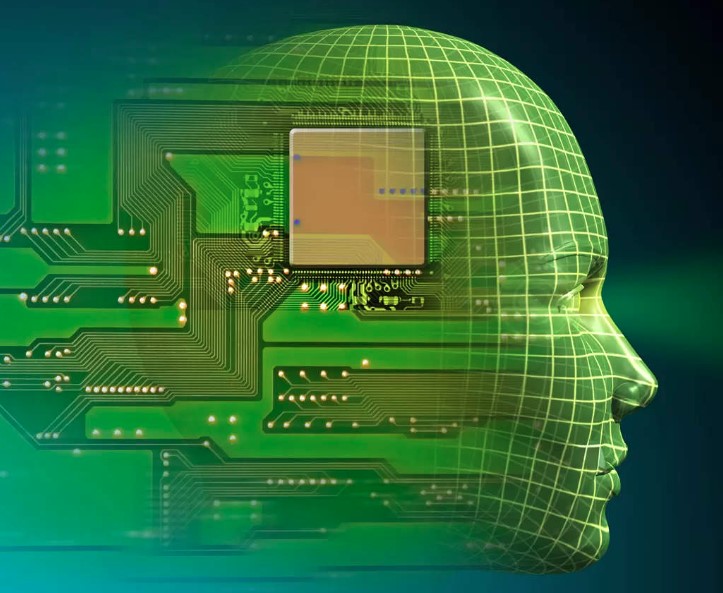
In conclusion, the revolutionary power of artificial intelligence is undeniable. Its ability to analyse data, automate tasks, enhance customer experiences, and revolutionize various industries is transforming our society at an unprecedented pace. As AI continues to advance, its potential for further revolutionary breakthroughs is limitless, propelling us into a future that was once only imagined in science fiction.
Discover What Revolutionary AI can do for you, join the ONPASSIVE Ecosystem Click Here
O-Tracker What Sets It Aside From Competing Website Analytics Tools?
O-Tracker is a modern website analytics software created by ONPASSIVE.
O-Tracker from ONPASSIVE sets itself apart from products on the market with a number of authoritative features and capabilities. Some of the distinguishing qualities of O-Tracker include the following:
1. Predictive Analytics: O-Tracker offers predictive analytics using cutting-edge machine learning techniques. It goes beyond the analysis of previous data and provides perceptions of user behaviour and upcoming developments. Businesses may remain ahead of the curve and make proactive, well-informed decisions thanks to this predictive capability.
2. Real-time Monitoring: O-Tracker offers real-time monitoring of website traffic and user interactions, in contrast to many other website analytics solutions that offer delayed or batched data. Businesses are able to react quickly to new trends or problems thanks to this instantaneous data access.
3. Complete User Profiling: O-Tracker compiles data from numerous touchpoints to build comprehensive user profiles. It monitors user behaviour across sessions and devices, providing a thorough snapshot of the user’s experience. Businesses may efficiently adjust their content and marketing strategies with the support of this level of detail.
4. Extremely configurable dashboards: O-Tracker offers dashboards that are extremely modifiable, enabling users to customise and set up their analytics interface in accordance with their own requirements and preferences. This versatility guarantees that companies can concentrate on the indicators that are most important to them.
5. Cross-Platform Integration: O-Tracker works well with a variety of tools and platforms, including marketing automation software, e-commerce platforms, and content management systems (CMS). Data gathering and analysis are made simpler through this integration, making it simpler for businesses to gain insights and take action.
6. AI-Driven Insights: O-Tracker makes use of artificial intelligence to automatically produce insightful conclusions from the data it gathers. Without the need for human analysis, these insights enable firms to find opportunities, spot abnormalities, and improve their online operations.
7. Adherence to privacy laws: O-Tracker values user privacy and abides by laws around the world governing data protection, including the GDPR and CCPA. It offers methods for user data anonymization and gives companies resources to guarantee adherence to data privacy rules.
8. Scalability: O-Tracker is built to easily scale along with a business’s expansion. O-Tracker can meet your needs without sacrificing performance whether you have a tiny website or a major e-commerce platform with millions of visits.
9. Security: In the digital world, security is of utmost importance. O-Tracker addresses this worry with strong security features including data encryption, access limits, and threat detection. Your website analytics data are kept secure and private thanks to this.
10. Global Support: O-Tracker offers users around-the-clock assistance with any problems or inquiries they might have. For organisations relying on its analytics information, this guarantees a smooth experience and reduces downtime.
As a result of its predictive analytics, real-time monitoring, user profiling, customization possibilities, cross-platform integration, AI-driven insights, privacy compliance, scalability, security, and global support, O-Tracker by ONPASSIVE stands out in the market for website analytics software. These authoritative features give businesses the freedom to improve user experiences, make data-driven decisions, and confidently accomplish their digital objectives.
Discover What Revolutionary AI can do for you, and join the ONPASSIVE Ecosystem Click Here




